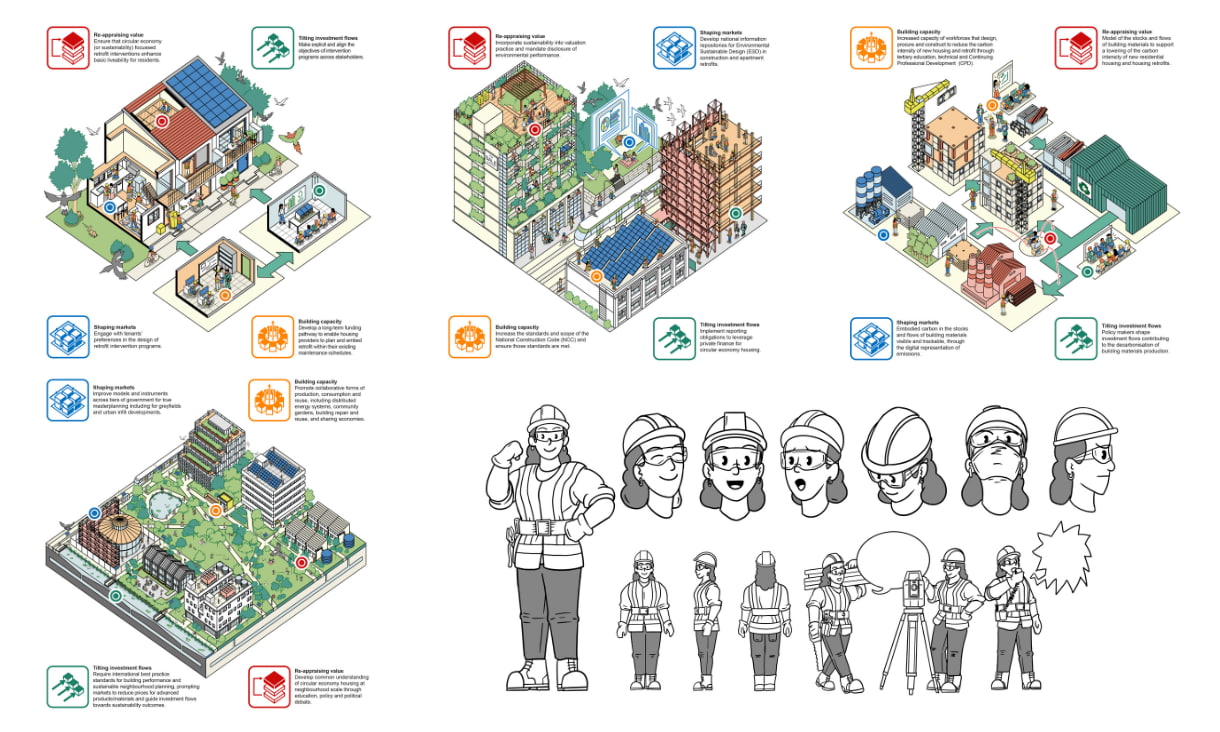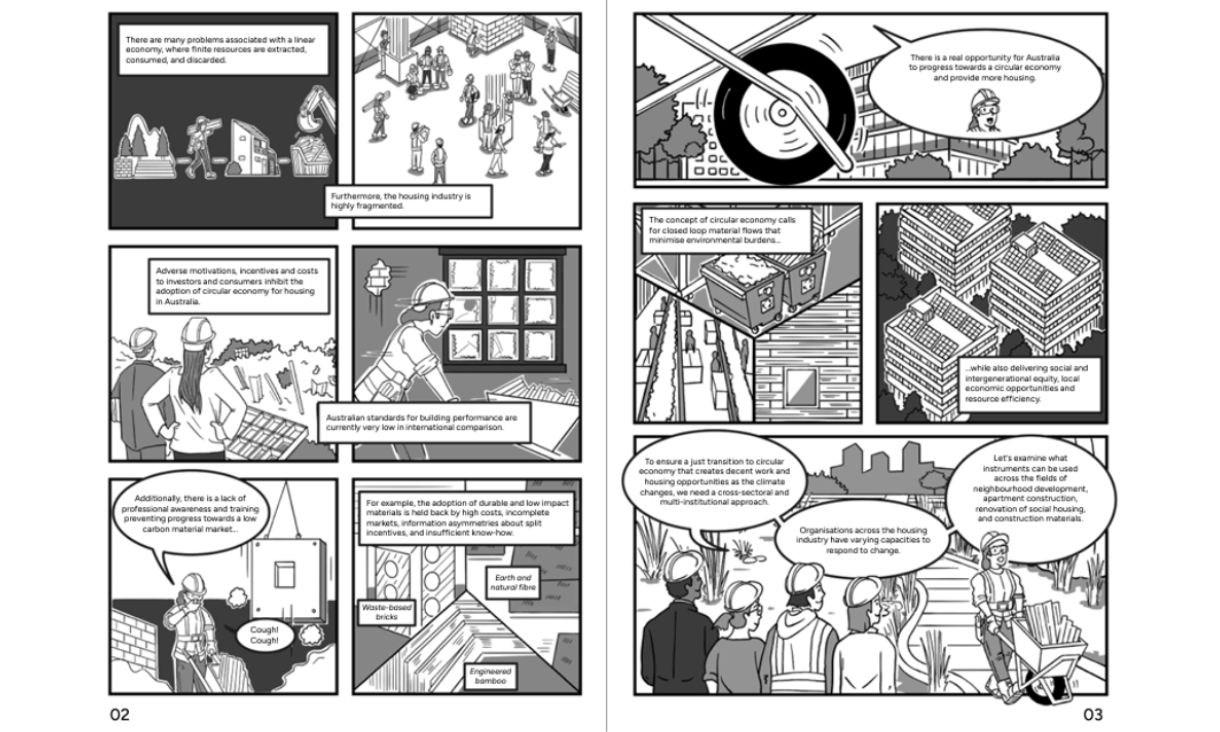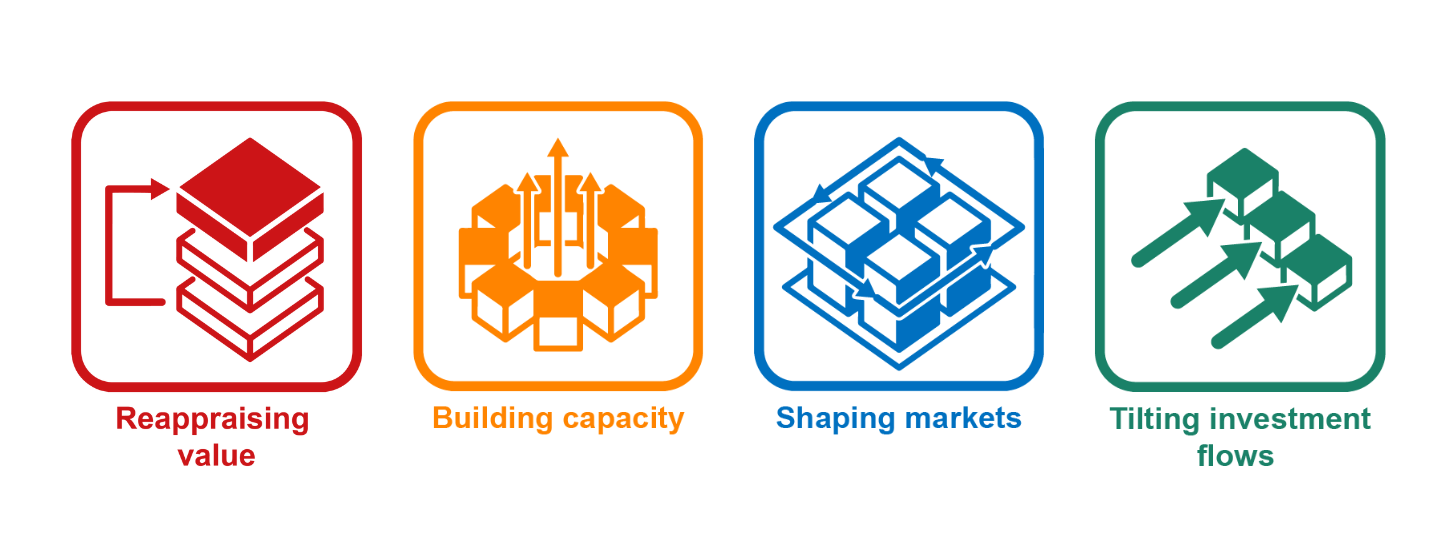Groundbreaking Graphic Novel Expands Housing Research Outreach
Master of Communication Design alumnus Zhen Xiong has worked with researchers to visually communicate the findings from a nation-wide research project funded by the Australian Housing and Urban Research Institute (AHURI).
Is it a bird? Is it a plane? No, it’s the circular economy!
Graphic novels have long been associated with our favourite superheroes. After all, that’s how the likes of Superman, Batman and Spiderman came to be household names whose cultural relevance spans generations.
But graphic novels detailing how the circular economy works have – until now – been missing from the shelves of the newsagents, bookstores and online retailers.
Thanks to Xiong, working alongside a team of cross-university researchers led by Professor Ralph Horne, graphic novels can now be used as a medium to communicate important research findings in a way the public can access, digest, and relate to.
“As academics we are used to producing long documents and heavy reports which can be time-consuming to read,” said Dr. Louise Dorignon, Vice-Chancellor’s Postdoctoral Research Fellow at RMIT Centre for Urban Research, and one of the researchers involved in this project.
“We realised we needed to do something different if we wanted to reach a broader audience,” she said.
“We also noticed that depictions of circular economy are often very abstract and that very few of these depictions relate to home and housing so our intention was to communicate our findings in a way that was accessible to a non-expert audience.
“After all, it is all about the people who ultimately live in these homes.”
 The graphic novel features builder Sam who takes readers through the importance of sustainable housing.
The graphic novel features builder Sam who takes readers through the importance of sustainable housing.When the team approached Xiong with their novel idea, he said that he didn’t think the task was that unusual, but he was initially nervous.
“I thought it as analogous to the challenges I tackled during my communication design studies, simplifying complex topics for easy comprehension,” he said.
“My nerves eased as our conversation unfolded – Dr Dorignon is very approachable and well-informed, and our discussion covered various topics, from illustration to architecture.
Dorignon explained that there were two phases to the design process.
“First, we worked on the policy summary, which summarised strategic instruments to transition to more circular processes in the housing industry,” she said.
“In the second phase we designed a 10-page greyscale graphic novel based on the research.”
Doringnon said the novel features Sam, a builder based in Australia who takes the reader through the importance and benefits of producing more sustainable housing.
“It uses a simple but effective drawing style with precise references to best-practice design, construction and retrofit methods, and real-life examples around the world.
“We worked hard to base the drawing on up-to-date depictions of urban and Australian built environments, using many photographic references to achieve this.
“For instance, we wanted to illustrate what a comfortable, and energy efficient home looked like by showing multiple generations living together, a thermostat with the ideal inside temperature, and a well-ventilated room.”
 Extract from the visual summary of Building circular economy housing: An Australian story
Extract from the visual summary of Building circular economy housing: An Australian storyXiong said that he used his creative process to come up with the characters and settings, while working with the team’s input and feedback to turn the team’s ideas into an actuality.
“For the first two themes – neighborhoods and building materials – I drew upon the input and suggestions provided by the team, integrating them into the illustrations,” he said.
“Approaching the theme of apartment housing, I chose one weekend to immerse myself in Melbourne’s CBD, taking numerous photographs of existing apartment structures for mood board inspiration. These snapshots served as the foundation for crafting the final illustration.
“When it came to the theme of housing retrofit, Dr. Dorignon recommended I add some native birds and little animals that commonly inhabit the suburban landscape to make the illustration more “Aussie”.”
“Additionally, I’m a big fan of comics and manga. Those memories from my previous reading also greatly inspired me to design the graphic novel’s layout and perspectives of scenes.”
Dorignon said that ultimately the team hopes the graphic novel will give the research more impact, as Australia begins to embrace the idea of the circular economy and sustainable futures.
 The researchers propose four areas of reform to be progressed simultaneously to achieve circular and sustainable housing outcomes.
The researchers propose four areas of reform to be progressed simultaneously to achieve circular and sustainable housing outcomes.“Housing policymakers across Asia and Europe are actively pursuing circular economy goals,” she said.
“As a result, Australia can learn from a wide range of circular economy approaches. Using better designs, techniques, and materials, we can readily reduce the carbon footprint of our housing.
“There is significant untapped potential to embrace circularity in the material market and the broader industry that delivers housing in Australia.
“Reusing materials can help reduce the carbon footprint of resource extracting, and repurposing existing building parts or products can lead to important cost-savings.”

